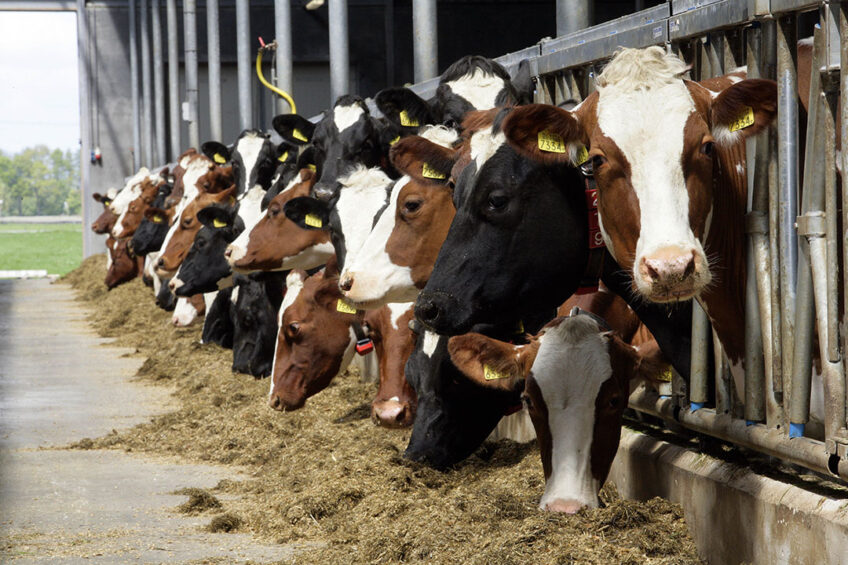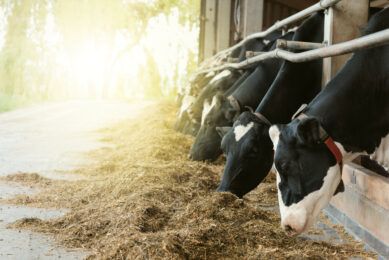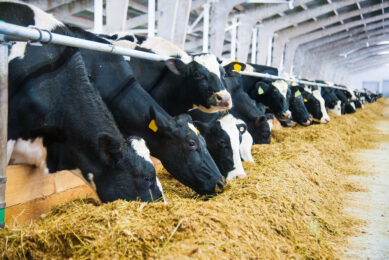Ruminants: How do trace mineral sources weather the weather?

Increased incidents of extreme weather are presenting feed concerns for cattle herds around the globe. In July 2021, almost every continent experienced widespread flooding.
Flooding and excessive flooding occurred in Western Europe, China and parts of the US. A recent report published in the journal Science Advances notes that most communities can expect that each degree of temperature rise will bring even more extreme wet conditions in the future.

Epic levels of rainfall pose a special concern for dairy and beef cattle feed exposed to the elements. Copper, zinc and manganese supplemented in the diet can clump together and metals such as copper, zinc and manganese can leach when exposed to moisture, especially when regular farm minerals or mineral supplements are offered to the herd.
With solubility, palatability and improving mineral intake in mind, researchers evaluated how sulphate, organic and hydroxychloride trace minerals ‘weathered the weather’ based on different rainfall scenarios.
Selecting a less soluble trace mineral – one that does not dissolve when it contacts moisture in the feed – will reduce clumping issues, and more importantly, will reduce trace mineral leaching to the environment, guaranteeing more trace mineral available to the animals. A less soluble source of trace mineral has been shown to influence the palatability of ruminant feed.
With solubility, palatability and improving mineral intake in mind, researchers evaluated how sulphate, organic and hydroxychloride trace minerals ‘weathered the weather’ based on different rainfall scenarios.
Findings from Florida on rainfall and ruminant feed
A study done at the University of Florida examined the amount of trace mineral that can be destroyed by weather conditions depending on the type of minerals being provided to an outdoor herd. The study looked at hydroxychloride minerals (Selko IntelliBond), organic trace minerals and sulphate-based trace minerals and compared how mineral blends survived a series of 2-, 4- or 6-inch rainfall events occurring over 3 periods in a single week. The trial found that when blended minerals or a complete mineral premix interacted with a rain event, both sulphate and organic trace minerals saw larger reductions in the metals provided compared to the losses seen by hydroxy-based trace minerals (see Figure 1 and Figure 2)

Supplementing free-choice formulations with a mineral source less prone to interacting with weather may allow improved intake by outdoor herds.

Palatability and feed intake
Palatability research conducted on both swine and ruminants has demonstrated that mineral source influences feed intake. Research finds that reactive mineral sources, like sulphate-based trace minerals, can change the flavour profile and reduce animals’ feed intake. This effect is especially evident when high levels of minerals are included in pre- and post-weaning diets.
Selecting less reactive trace minerals – like hydroxychloride-based trace minerals – can support or even improve intake of feed for calves. Getting calves’ feed intake off to a strong start can help animals reach their full potential as seen in better adaptation following weaning, along with stronger weight gain earlier in life and throughout the production process.
Research: Exploring trace mineral sources in cow feeds
Selko, the feed additives brand of Trouw Nutrition, is sharing research exploring the use of different trace mineral sources, mineral absorption and bioavailability when used in dairy cows and cattle feeds. Read more…
The flavour of feed, especially for young animals, can be an important consideration when developing the animal’s diet as taste can either stimulate or suppress appetite and feed intake. And because animals can taste different flavours, palatability should not be overlooked.
Palatability also plays a role in feed and mineral intake when minerals are provided in an ad libitum/free choice form and supplement intake needs to be managed. An initial step in guiding the use of freely provided mineral supplements is reducing waste of the mineral.
In a palatability study at the University of Florida examining trace mineral inclusion in creep feed for limit-fed calves, researchers found that removing sulphate-based minerals from the feed improved feed intake. There was about an 8-fold difference as supplement intake increased from 20g to 160g during the 14-week trial (see Figure 3).

A 2-year study, also conducted at the University of Florida, explored the use of creep feeds combined with no mineral, or a blend of copper, zinc, and manganese from either a sulphate or hydroxy-based mineral source. Creep feeds were provided starting 84 days before weaning. The researchers found that calves ate the largest amount of the hydroxy-fortified creep feed – 0.109kg/day or 8.73kg for the period – followed by intake of the control feed. However, intake of the sulphate-fortified diet was significantly lower, with the hydroxy feed seeing about a 26% increase in consumption (see Figure 4 below).
Similarly, feeds with hydroxy-based trace minerals out-performed those with either sulphate or organic trace minerals in a 14-day examination of mineral concentrate intake. Additional research also demonstrated that calves with better mineral intake have a faster post-weaning recovery.

Pre-weaning intake for both beef and dairy calves has been linked to improved post-weaning performance. In dairy heifers, strong post-weaning performance helps dictate age at first calving, which also influences lactation performance meaning that mineral use can have a long-term influence throughout the cow’s lifetime. In cattle, intake and body weight at weaning plays a role in weight gain and feedlot performance.
Avoid the production consequences of adverse flavours in feed
When feed or mineral supplements contain flavours that animals avoid, their feed intake may decrease. Tastes that animals may avoid include bitter, sour, and salty flavours – similar to flavours released by highly soluble trace minerals. Sulphate-based mineral inclusion produces an adverse response for several species when these source of trace minerals are included in feed. Using a less reactive trace mineral source such as IntelliBond hydroxychloride minerals can support or increase feed intake by offering a neutral taste.
Trace minerals in dairy ration: Why source matters
When it comes to ingredients in the dairy ration, how much does the source really matter? Research shows that sulphate sources of trace minerals may harm dairy cows’ physiological performance, reduce NDF digestibility, and negatively impact sustainability. This article addresses concerns associated with the use of sulphate sources of trace minerals in the dairy ration and presents trace mineral alternatives. Read more…
In reviewing findings from trials, researchers concluded that calves prefer to consume more stable trace mineral sources such as hydroxychloride minerals over sulphate sources and also over organic trace minerals. This preference continued across a variety of supplementation stages and feed strategies. Increased preferential intake and palatability as a result of stable, non-reactive trace mineral source supplementation can help contribute to greater performance results including higher feed intake, daily gain and also body weight at and after weaning. Research shows that higher weaning weights also result in higher lifetime performance in beef and dairy cattle.
Considering hygroscopicity and premixes
Beyond ad libitum feeding management, premix and mineral supplements can also be challenged with moisture in the environment. Hygroscopicity refers to the capacity of a product to react to the moisture content in the air by absorbing water vapor. The stability of a trace mineral source influences its ability to stay intact and avoid taking on moisture in liquid or vapor form. Researchers evaluated premixes formulated with sulphate and organic trace minerals and compared hygroscopicity to hydroxychloride minerals (IntelliBond). The comparison showed that premixes formulated with hydroxychloride minerals had less clumping and better manufacturing/feeding attributes.
Mode of action drives performance
What accounts for the improved palatability of hydroxychloride trace minerals and their improved ability to manage rainfall and vapour moisture? The strong covalent bonds of hydroxychloride trace minerals are insoluble, meaning they do not break down when exposed to moisture. This insolubility protects the mineral in the feed and keeps it from dissociating until it reaches the proper area within the animal. The bond of hydroxychloride trace minerals also protects against reactions with other ingredients and antagonists in the feed.
Trouw Nutrition continues to invest in in-vitro and in-vivo studies to evaluate the mode of action underlying the performance of trace minerals in production environments worldwide.
Author:
Davi Brito De Araujo, global trace minerals programme manager, Trouw Nutrition
Join 13,000+ subscribers
Subscribe to our newsletter to stay updated about all the need-to-know content in the dairy sector, two times a week.










